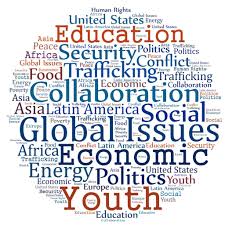Sustainable Resource Utilization and Environmental Conservation: A Holistic Approach
The escalating global challenges of climate change, resource depletion, and biodiversity loss necessitate a paradigm shift towards sustainable resource utilization and environmental conservation. This necessitates a comprehensive, integrated strategy grounded in ecological principles, economic viability, and social equity. This essay explores key strategies within this framework, emphasizing the interconnectedness of ecological systems and the importance of multi-stakeholder collaboration. Key concepts to be explored include the ecological footprint, carrying capacity, the triple bottom line (environmental, social, and economic sustainability), and the concept of resilience in ecological and socio-economic systems. The application of these concepts forms the basis for achieving a sustainable and equitable future.
1. Ecosystem-Based Management and the Interconnectedness of Environmental Systems: Sustainable resource management must recognize the intricate web of interactions within and between ecosystems. Applying the principles of ecosystem-based management, which emphasizes the holistic understanding of ecological processes and interactions, is crucial. Ignoring the interconnectedness of ecological processes, as exemplified by the butterfly effect, can lead to unforeseen and detrimental consequences. For instance, deforestation in one region can impact rainfall patterns globally, highlighting the need for a systems-thinking approach encompassing geographic and temporal scales. This requires utilizing integrated assessment modeling techniques to forecast the potential repercussions of resource extraction and environmental modification.
2. Transition to Renewable Energy Sources and Mitigation of Climate Change: The transition from fossil fuels to renewable energy sources is paramount to mitigating climate change. This aligns with the principles of sustainable development, aiming to meet present needs without compromising future generations’ ability to meet their own. Investment in solar, wind, geothermal, and hydroelectric power, guided by cost-benefit analysis and life-cycle assessments of various renewable technologies, is essential. Furthermore, integration with smart grids and energy storage solutions is crucial to ensure grid stability and reliability in a decentralized energy system.
3. Sustainable Agricultural Practices and Food Security: Sustainable intensification of agricultural production is crucial to meet the growing global food demand while minimizing environmental impact. Implementing practices like agroecology, precision agriculture, and integrated pest management reduces reliance on synthetic fertilizers and pesticides. Promoting agroforestry and other conservation agriculture techniques enhances soil health, biodiversity, and carbon sequestration. A life-cycle assessment of food production systems enables identification of environmental hotspots and allows for targeted interventions. The adoption of these practices supports both food security and environmental sustainability.
4. Promoting Responsible Consumption and Waste Management: Consumer behavior significantly influences resource depletion and waste generation. Implementing circular economy principles, focusing on waste reduction, reuse, and recycling, is critical. This requires promoting extended producer responsibility (EPR) schemes, incentivizing sustainable product design, and educating consumers about responsible purchasing decisions. Life-cycle assessments of products help evaluate their environmental impact, enabling informed consumer choices.
5. Biodiversity Conservation and Ecosystem Services: Protecting biodiversity is fundamental for maintaining ecosystem services, such as pollination, water purification, and climate regulation. Implementing conservation strategies, such as establishing protected areas, implementing habitat restoration projects, and combating illegal wildlife trade, is essential. This requires utilizing spatial analysis techniques to identify critical biodiversity hotspots and prioritize conservation efforts. The economic valuation of ecosystem services can provide a strong case for conservation investment.
6. Fostering International Cooperation and Knowledge Sharing: Addressing global environmental challenges requires concerted international efforts. The establishment of international agreements, facilitated by mechanisms such as the United Nations Framework Convention on Climate Change (UNFCCC), is crucial. Sharing best practices and technological innovations through international collaborations and capacity building initiatives enhances the effectiveness of conservation efforts worldwide.
7. Investment in Green Technologies and Innovation: Investing in research and development of green technologies, including renewable energy technologies, sustainable materials, and waste management solutions, is essential for achieving sustainable development goals. This requires strategic funding mechanisms that incentivize innovation and technology transfer, as well as supportive policy frameworks that accelerate the adoption of green technologies.
8. Education, Awareness, and Community Engagement: Raising public awareness about environmental issues is critical to foster behavioral change and support for sustainable policies. This involves integrating environmental education into school curricula, utilizing targeted public awareness campaigns, and promoting citizen science initiatives. Community engagement strategies ensure local ownership of sustainability initiatives.
9. Effective Policy and Governance Frameworks: Strong environmental policies, regulations, and enforcement mechanisms are indispensable for driving sustainable development. This involves incorporating environmental considerations into all aspects of policymaking (e.g., through Environmental Impact Assessments), utilizing market-based instruments (e.g., carbon pricing), and strengthening institutional capacity for environmental governance.
10. Sustainable Business Practices and Corporate Social Responsibility: Businesses play a critical role in driving sustainable practices through responsible supply chains, resource efficiency, and the development of sustainable products and services. Integrating sustainability into core business strategies and adopting corporate social responsibility (CSR) initiatives enhances business competitiveness and contributes to environmental protection.
11. Green Finance and Investment: Redirecting financial flows towards sustainable investments is crucial for scaling up sustainable initiatives. This involves developing green finance mechanisms such as green bonds, promoting responsible investing, and ensuring access to capital for sustainable businesses. The use of financial incentives can drive the transition to a low-carbon, resource-efficient economy.
12. Environmental Stewardship and Individual Action: Individuals can play a crucial role in driving sustainability through responsible consumption, waste reduction, and active participation in environmental initiatives. This includes supporting environmental organizations, advocating for policy change, and promoting sustainable lifestyles.
Conclusions and Recommendations:
Achieving sustainable resource utilization and environmental conservation requires a holistic approach that integrates ecological, economic, and social considerations. The strategies outlined above, grounded in established scientific principles and models, highlight the interconnectedness of environmental challenges and the need for collaborative action across sectors and geographies. Further research is needed to refine our understanding of complex ecological interactions, develop more effective policy instruments, and enhance the capacity of communities to implement sustainable practices. The transition to a truly sustainable future demands ongoing innovation, robust governance, and a shared commitment to environmental stewardship. Only through concerted efforts can we ensure a healthy planet for present and future generations.






